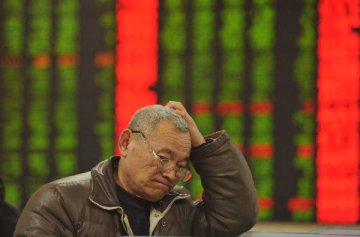
Recently, due to the influence of global factors, as well as the increase in the proportion of A-share market inclusion by MSCI, and the lifting sentiment caused by the favorable policies regarding industrial internet, the market continued its downward adjustment.
At the same time, there was a lack of sustained hot-spot stocks, so the sectors’ performance tended to rotate in the market.
The main benchmarks all had significant lost.
The Shanghai Composite Index was down 126.34 points, or 4.52%, to end at 2668.97. The Shenzhen Composite Index declined 456.45 points, or 5.18%, to close at 8357.04. The Growth Enterprise Index dropped 77.40 points to 1434.31, leaving it with a 5.12% weekly loss. The Small and Medium-Sized Index fell 322.31 points, or 5.30%, to finish at 5761.12.
These days, the industrial internet sector has been active. On August 13th, the general office of the ministry of industry and information technology issued the notice on the investigation of the development of industrial internet network. According to the notice, in order to fully handle the development of industrial internet network and accelerate the construction of its system, an investigation on the development of industrial Internet network is now organized and carried out, according to the notice.
However, the reason for the strong stock price rise is not only the favorable policies, but also the companies’ outstanding performance as showed in the mid-year report.
Meanwhile, Wei Miao, the minister of industry and information technology department, said at the 2018 industrial internet summit that China will implement the industrial internet three-year action plan from 2018 to 2020.
Since 2018 is the first year of the plan, the development of industrial internet is expected to be promoted further. The benefits of industrial internet-related policies are looming large.
At present, the policies have been carried out, and there are plenty space for the market’s further development. Right now, the domestic industrial base is solid enough, so the advantage of later development is apparent.
Earlier during the week, MSCI announced that it would implement the second step of A-share inclusion, increasing the inclusion coefficient of A-share from 2.5% to 5%.
In addition, 10 more A-share stocks will be added to MSCI with an inclusion factor of 5%, bringing the number of A-share stocks included in MSCI to 236. Mark Make-peace, the CEO of another index provider FTSE Russell, also said that if they decided to include China’s mainland stocks into their flagship index, they could give a higher weight on these stocks than MSCI.
At present, the A-share stocks’ evaluation is low and its global importance is gradually increasing. Therefore, as long-term investors, the foreign institutions are strategically position their investment in China. An increase to 100% of the inclusion of A-share stocks would make the potential capitals that have been following MSCI index into A-share market increase to $400 billion. At that time, the proportion of institutional investors in the A-share market will be significantly increased, and the a-share market will be more international and mature.
Another thing to notice in the market is that there is a lack of sustained hot spots as adjustment continued and trading volume decreased. Tech stocks, which had led the rebound , fell back across the board over the week, with 5G, cloud computing, domestic software, and cybersecurity concepts had fair performance.
Meanwhile, the policy-driven steel, cement, building materials and other construction sectors also faced a correction during the week. What’s more, the previous strong great consumption sector made up the falling trend.
In the near term, the market cannot have effective and continuous hot spots, but the space for the current indexes to move downward is also limited. In short term, the market may face sideway fluctuation and volatility in a narrow range before it’s settled.






















Latest comments